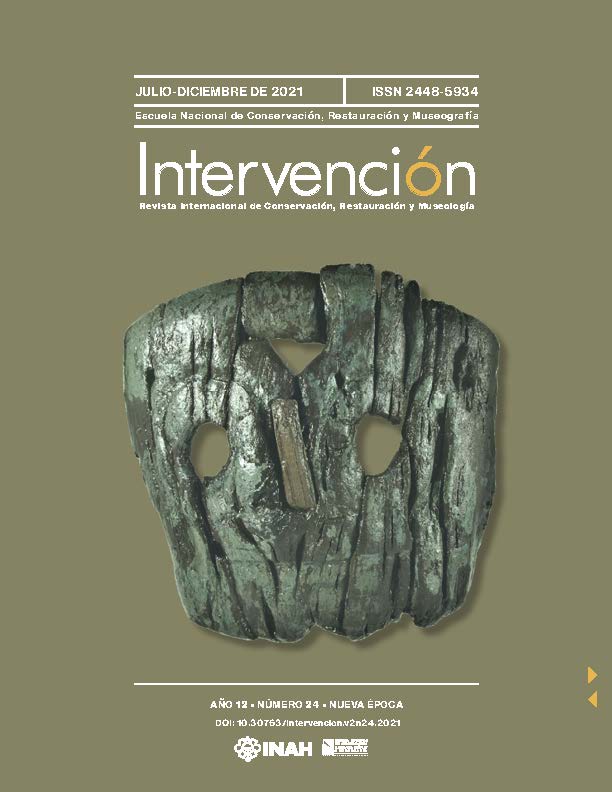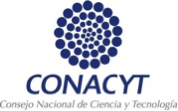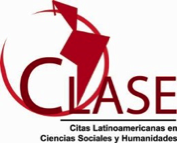Pigmet Identification of a Mural Painting in the Former Convent of Santo Domingo Tehuantepec, Oaxaca, Mexico
DOI:
https://doi.org/10.30763/intervencion.253.v2n24.32.2021Keywords:
mural painting, pigments, X Ray, X-Ray Fluorescence, conservation, 16th century conventAbstract
The following article discusses the application of non-invasive and non-destructive analytical techniques to study the materials used in a mural painting from the former convent of Santo Domingo Tehuantepec, in Oaxaca, Mexico. The study is part of the restoration project for this heritage site and its ornamental finishes impacted by the earthquake of September 7th, 2017. The study characterizes the pictorial palette of the mural using XRF and digital microscopy and colorimetry to record the colors of the mural painting. The results indicated that very costly pigments with a high level of quality and durability (cinnabar or vermilion, orpiment, and bone black) had been used, which speaks to the historic and material importance of the decorations in the building.
Downloads
References
Arciniega-Corona, A., Martínez, F., Meléndez, D. y Téllez, P. (2020). Informe de análisis de materiales. Pigmentos de la pintura mural exconvento de Santo Domingo Tehuantepec “Rey Cosijopi”, Oaxaca. Secretaría de Cultura-INAH, Archivo de Investigación CNCPC, clave 401.3S2-2020/9, México.
Argote, L., Torres, T., Hernández-Padrón, G., Ortega, V., López-García, P. y Castaño, V. (2020). Cinnabar, hematite and gypsum presence in mural paintings in Teotihuacan, Mexico. Journal of Archaeological Science: Reports, 32, 102375. doi: https://doi.org/10.1016/j.jasrep.2020.102375
Arroyo, E. M., Hernández, E. y Espinoza, M. E. (2019). Los murales de Tlayacapan: historia, técnica y materiales. Anales del Instituto de Investigaciones Estéticas, 115(41), 197-241. doi: https://doi.org/10.22201/iie.18703062e.2019.115.2699
Brasseur, Ch. (1981). Viaje por el istmo de Tehuantepec 1859-1860, Fondo de Cultura Económica.
Camacho, A. L. y Mederos, F. J. (2011). Alcances de la técnica de fluorescencia de rayos X (FRX) aplicada al estudio de la distribución estratigráfica de pigmentos en la pintura de caballete novohispana. Caso de estudio: la pintura “San Fernando y San Luis entre papas, obispos y doctores seráficos” del templo de San Fernando de la Ciudad de México [Tesis de licenciatura no publicada]. Escuela de Conservación y Restauración de Occidente.
Cennini, C. (2009). El libro del arte. Akal.
Dupey, E. (2015). El color en los códices prehispánicos del México Central: identificación material, cualidad plástica y valor estético. Revista Española de Antropología Americana, 45(1), 149-166. doi: https://doi.org/10.5209/rev_REAA.2015.v45.n1.52359
Flores, A. (2020). Cambios y continuidades de la pintura mural conventual del altiplano central 1521-1640 [Tesis de doctorado no publicada]. Universidad Nacional Autónoma de México. http://132.248.9.195/ptd2013/Presenciales/0702311/Index.html
García, O. (2010). La industria del añil en Asunción Ixtaltepec, Oaxaca. Investigación y conservación. Memorias de la XXIX mesa redonda de la Sociedad Mexicana de Antropología. Facultad de Filosofía y Letras de la Benemérita Universidad Autónoma de Puebla.
Instituto Nacional de Antropología e Historia. (2017). Censo de daños al patrimonio por el sismo del pasado jueves 7 de septiembre. Boletín INAH, no. 324. Dirección de Medios de comunicación. https://www.inah.gob.mx/boletines/6515-censo-de-danos-al-patrimonio-por-el-sismo-del-pasado-jueves-7-de-septiembre
Mena, R. (2017). Arquitectura inicial para la evangelización de los zapotecos en la provincia de Tehuantepec 1522-1555 [Tesis de maestría no publicada]. Universidad Nacional Autónoma de México.
Miliani, C., Domenici, D., Clementi, C., Presciutti, F., Rosi, F., Buti, D., Romani, A., Laurencich Minelli, L. y Sgamellotti, A. (2012). Colouring materials of pre-Columbian codices: non-invasive in situ spectroscopic analysis of the Codex Cospi. Journal of Archaeological Science, 39, 672-679. doi: https://doi.org/10.1016/j.jas.2011.10.031
Ortega, M. (2003). Caracterización de pigmentos prehispánicos por técnicas analíticas modernas [Tesis de doctorado no publicada]. Universidad Autónoma del Estado de México. https://inis.iaea.org/collection/NCLCollectionStore/_Public/34/028/34028230.pdf
Prieto, D. (2018). Sismos y patrimonio cultural. Destrucción y restauración. En D. Golberg (Coord.). Sismos y patrimonio cultural. Testimonios, enseñanzas y desafíos, 2017 y 2018 (pp. 109-123). Secretaría de Cultura de la Ciudad de México. https://mediateca.inah.gob.mx/repositorio/islandora/object/libro%3A738
Rigon, C., Caterina, F., Vázquez de Ágredos, M. L., Campíns-Falcó, P. y Van, H. (2020). New results in ancient Maya rituals researches: The study of human painted bones fragments from Calakmul archaeological site (Mexico). Journal of Archaeological Science: Reports, 32, 102418. doi: https://doi.org/10.1016/j.jasrep.2020.102418
Sánchez, J. M. y Quiñones, M. D. (2009). Materiales pictóricos enviados a América en el siglo XVI. Anales del Instituto de Investigaciones Estéticas, 31(95), 45-67. doi: http://dx.doi.org/10.22201/iie.18703062e.2009.95.2293
Servicio Sismológico Nacional. (2021). Instituto de Geofísica, Universidad Nacional Autónoma de México [base de datos]. http://www2.ssn.unam.mx:8080/sismos-fuertes
Tello, C. (1 de julio de 2015). IX. El comandante de Tehuantepec. Nexos. https://www.nexos.com.mx/?p=25423
Trentelman, K., Schmidt, C. y Turner, N. (2012). XRF analysis of manuscript illuminations. En A. N. Shugar y J. L. Mass (Eds.), Handheld xrf for Art and Archeology (pp. 165-167). Leuven University Press.
Vandenabeele, P., Bodé, S., Alonso, A. y Moens, L. (2005). Raman spectroscopic analysis of the Maya wall paintings in Ek’Balam, Mexico. Spectrochimica Acta Part A, 61, 2349-356. doi: https://doi.org/10.1016/j.saa.2005.02.034
Vázquez de Ágredos, M. L. (2007). Los colores y las técnicas de la pintura mural maya. Anales del Museo de América (15), 55-66.
Vázquez de Ágredos, M. L., Roldán, C., Murcia, S., Juanes, D., Jaén, M. G., Faugère, B. y Darras, V. (2019). Multianalytical characterization of pigments from funerary artefacts belongs to the Chupicuaro Culture (Western Mexico): Oldest Maya blue and cinnabar identified in Pre-Columbian Mesoamerica. Microchemical Journal, 150, 104101. doi: https://doi.org/10.1016/j.microc.2019.104101
Zavala, M. M. (2013). La paleta del pintor novohispano. Los pigmentos y la representación del color [Tesis de licenciatura no publicada]. Universidad Nacional Autónoma de México. https://ru.dgb.unam.mx/handle/DGB_UNAM/TES01000696814
Zetina, S., Arroyo, E. M., Falcón, T. y Hernández, E. (2014). La dimensión material del arte novohispano. Intervención, Revista de Conservación, Restauración y Museología (10), 17-29. https://mediateca.inah.gob.mx/repositorio/islandora/object/articulo:14245
Additional Files
Published
How to Cite
Issue
Section
License
Copyright (c) 2021 Instituto Nacional de Antropología e Historia (INAH)

This work is licensed under a Creative Commons Attribution-NonCommercial 4.0 International License.

Atribución-NoComercial 4.0 Internacional
https://creativecommons.org/licenses/by-nc/4.0/deed.es
Usted es libre de:
- Compartir — copiar y redistribuir el material en cualquier medio o formato
- Adaptar — remezclar, transformar y construir a partir del material
Bajo los siguientes términos:
-
Atribución — Usted debe dar crédito de manera adecuada, brindar un enlace a la licencia, e indicar si se han realizado cambios. Puede hacerlo en cualquier forma razonable, pero no de forma tal que sugiera que usted o su uso tienen el apoyo de la licenciante.
-
No Comercial — Usted no puede hacer uso del material con propósitos comerciales.




















